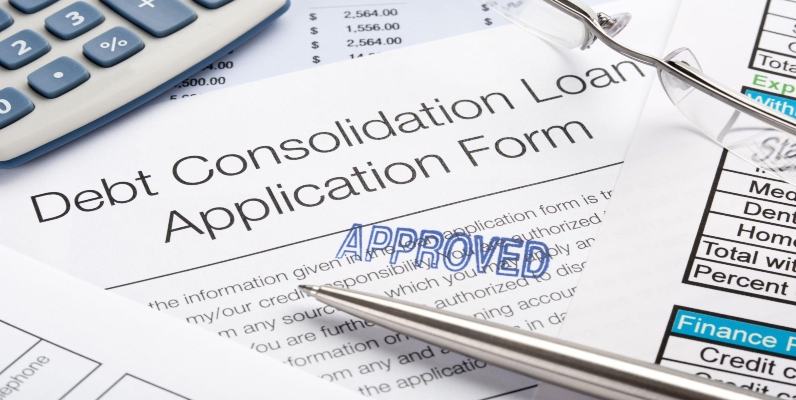
Personal finance management is an essential part of living a financially healthy life. It can be difficult to keep up with debt payments, especially if you have multiple debts to manage. However, the Debt Snowball Method is an effective debt-reduction strategy that can assist you in reducing your debt burden and achieving financial freedom.
The Debt Snowball Method is a debt-reduction strategy that entails paying off your smallest debts first and then progressing to larger debts. The method is named after the snowball effect, which occurs when a small snowball rolls down a hill. Similarly, the Debt Snowball Method builds momentum as you pay off smaller debts, and you can use that momentum to pay off larger debts.
Here are the steps to follow to implement the Debt Snowball Method:
Create a list of all of your debts.
Making a list of all your debts, including credit cards, loans, and any other outstanding debts, is the first step in the Debt Snowball Method. For each debt, include the amount owed, the minimum monthly payment, and the interest rate.
Sort Your Debts
Next, arrange your debts in ascending order of size, with the smallest debt at the top and the largest debt at the bottom. This is the order in which you will pay off your debts.
Pay Off Your Smallest Debt First
To begin, make the minimum monthly payment on all of your debts except the smallest. Make the minimum payment plus any extra money you can afford to pay for the smallest debt. Once you’ve paid off the smallest debt, apply the money you were paying on it to the next smallest debt on your list.
Continue until all of your debts are paid off.
Continue paying off your debts in descending order until all of them are paid off. Remember to continue making the minimum monthly payments on all of your debts except the one you are currently repaying. As you pay off each debt, the amount of money available to pay off the next debt grows, creating momentum and speeding up the process.
The Debt Snowball Method is an effective debt-reduction strategy because it emphasizes small victories. Paying off your smallest debt first allows you to quickly eliminate one debt while gaining momentum, which can motivate you to continue. Paying off a debt can provide a powerful psychological boost that motivates you to continue the debt-reduction process.
The Debt Snowball Method is also effective because it aids in the formation of good habits. You are developing a habit of prioritizing debt reduction in your budget by consistently making extra payments on your smallest debt. This habit can spread to other aspects of your financial life, allowing you to make better financial decisions in the future.
Another benefit of the Debt Snowball Method is that it can assist you in reducing your overall debt burden. Paying off your smallest debts first reduces the number of debts you have to manage, which can make your financial life easier. Furthermore, as you pay off one debt, you free up funds that you can use to pay off the next debt faster, allowing you to reduce your overall debt burden faster.
The Debt Snowball Method has some potential drawbacks. The most significant disadvantage is that it may not be the most cost-effective strategy. Paying off your smallest debts first may cause you to overlook higher-interest debts, which may cost you more money in the long run. However, in some cases, the psychological benefit of quickly repaying a debt outweighs the financial cost.
The Debt Snowball Method is not appropriate for everyone. If you have a lot of high-interest debts, you might want to try a different debt-reduction strategy, like the Debt Avalanche Method, which prioritizes paying off debts with the highest interest rates first. This can save you money over time by lowering the amount of interest you pay. The Debt Snowball Method, on the other hand, may be more effective if you have a number of smaller debts.
It is critical to understand that the Debt Snowball Method is not a one-size-fits-all solution. Every individual’s financial situation is unique, and you should select the debt reduction strategy that works best for you. If you’re not sure which strategy is best for you, consult with a financial advisor or credit counselor who can help you weigh your options.
There are additional steps you can take in addition to the Debt Snowball Method to reduce your debt burden and achieve financial freedom. Here are some more pointers:
Make a Budget
Making a budget can assist you in better managing your finances. You can identify areas where you can cut back and redirect that money toward debt reduction by tracking your income and expenses.
Increase Your Earnings
Increasing your income is one way to reduce your debt burden. Consider starting a side business, requesting a raise, or pursuing additional education or training to increase your earning potential.
Talk to your creditors.
If you’re having trouble making debt payments, negotiating with your creditors may be beneficial. They may be willing to work out a payment plan or lower your interest rates in order to help you pay off your debts faster.
Seek Professional Assistance
If you are feeling overwhelmed by your debt, it may be beneficial to seek professional assistance. A financial advisor or credit counselor can assist you in developing a plan to reduce your debt and achieve financial independence.
To summarize, the Debt Snowball Method is an effective strategy for eliminating debt and achieving financial independence. You can reduce your debt and develop good financial habits by focusing on small victories and building momentum. However, it is critical to select a debt-reduction strategy that is appropriate for your specific financial situation. You can overcome your debt and achieve financial freedom with discipline, determination, and a solid plan.





